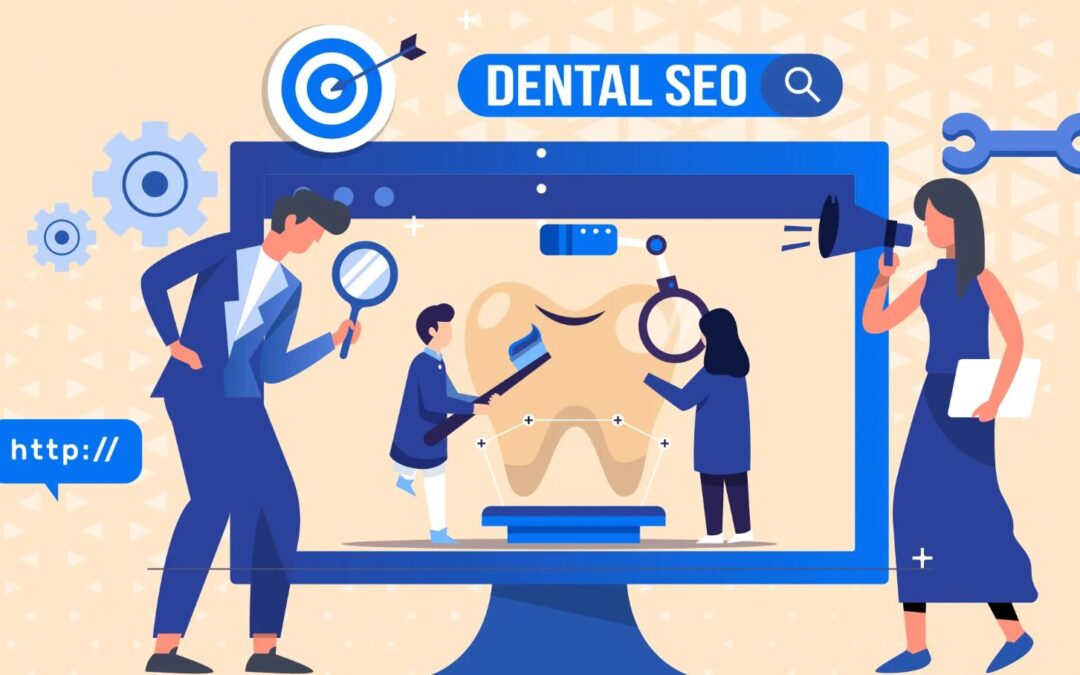In today’s digital landscape, simply having a website is no longer enough for dental practices in Australia to attract and retain patients. With the growing reliance on search engines, particularly Google, it’s crucial for dental practices to embrace search engine optimisation (SEO) as a vital part of their marketing strategy. But what exactly is dental SEO, and how can it enhance your website to drive engagement? This article will explore the intricacies of dental SEO, focusing on its components and the unique ways it can elevate your practice’s online presence.
Understanding Dental SEO
Dental SEO refers to the specific strategies and techniques employed to optimise a dental practice’s website so that it ranks higher in search engine results, particularly for local searches. This involves optimising various elements, such as keywords, content, metadata, and backlinks, all tailored to the dental industry. With patients increasingly turning to search engines to find local dentists and services, implementing effective dental SEO is essential for increasing visibility and attracting new clients.
The Importance of Local SEO
For dental practices, The Importance of Local SEO is paramount. Most patients searching for dental services are looking for providers in their immediate vicinity. This makes it essential for your practice to appear in local search results. Google My Business (GMB) plays a critical role in this aspect of SEO, allowing dental practices to create a profile that appears in local searches. Ensuring that your GMB listing is fully optimised—complete with accurate information, services offered, and patient reviews—can significantly enhance your visibility.
Tips for Optimising Your Google My Business Listing:
- Complete Your Profile: Fill out all fields, including practice name, address, phone number, and website URL.
- Regular Updates: Keep your listing updated with new services, operating hours, and any special promotions.
- Encourage Reviews: Ask satisfied patients to leave positive reviews. Respond to reviews—both positive and negative—to show engagement.
- Use Relevant Categories: Choose categories that accurately describe your services to improve local search relevance.
Keyword Research: The Foundation of Dental SEO
Effective dental SEO begins with thorough keyword research. Understanding what potential patients are searching for allows you to tailor your website’s content to meet their needs. Long-tail keywords, which are more specific phrases that potential patients might use, are particularly valuable. For example, instead of just “dentist,” consider using phrases like “family dentist in Brisbane” or “emergency dental care in Sydney.”
Tools for Keyword Research:
- Google Keyword Planner: A free tool that helps identify relevant keywords and their search volumes.
- Ubersuggest: A user-friendly tool that provides keyword suggestions and SEO insights.
- AnswerThePublic: This tool generates questions and phrases related to your keywords, helping you understand what potential patients are asking.
Crafting Quality Content
Once you’ve identified your keywords, it’s time to create quality content that speaks to your audience. High-quality content is crucial for engaging visitors and improving your site’s SEO ranking. This can include blog posts, service pages, and educational resources that answer common patient questions and concerns.
Content Ideas for Dental Practices:
- Educational Blog Posts: Write articles about dental hygiene tips, the importance of regular check-ups, or the latest treatments available.
- FAQs: Create a comprehensive FAQ section addressing common patient concerns, such as treatment costs, insurance options, and appointment scheduling.
- Patient Testimonials: Share success stories and experiences from satisfied patients to build trust and credibility.
Optimising On-Page Elements
On-page SEO involves optimising various elements within your website to enhance its visibility. This includes optimising title tags, meta descriptions, headings, and image alt text. Each page on your website should have a unique title and meta description that includes relevant keywords.
Tips for On-Page Optimisation:
- Title Tags: Keep them under 60 characters and include your primary keyword.
- Meta Descriptions: Write compelling descriptions under 160 characters to encourage clicks.
- Headings: Use headings (H1, H2, H3) to structure your content and include keywords naturally.
- Image Optimisation: Use descriptive file names and alt text for images, incorporating relevant keywords.
Mobile Optimisation: A Must-Have
With more patients using mobile devices to search for dental services, ensuring your website is mobile-friendly is critical. A responsive design adjusts your website’s layout based on the screen size, providing a seamless experience across all devices. Google prioritises mobile-friendly sites in its rankings, making this an essential aspect of dental SEO.
Mobile Optimisation Tips:
- Fast Loading Times: Optimise images and minimise code to improve loading speed.
- Easy Navigation: Ensure your website is easy to navigate on mobile devices, with clear menus and buttons.
- Responsive Design: Use a design that adjusts to different screen sizes for optimal viewing.
Building Quality Backlinks
Backlinks—links from other websites to yours—are a crucial factor in determining your site’s authority and ranking. Building quality backlinks from reputable sources can significantly boost your SEO efforts. For dental practices, this can involve reaching out to local health blogs, dental associations, or community websites to feature your practice or collaborate on content.
The Role of Directories in Backlinking
In addition to traditional backlink strategies, listing your practice in reputable online directories can greatly enhance your backlink profile and improve local SEO. Directories such as Healthengine, Whitecoat, and Yellow Pages not only provide valuable backlinks but also increase your visibility to potential patients searching for dental services in your area.
Strategies for Acquiring Backlinks:
- Guest Blogging: Write guest posts for local health and wellness blogs, including links back to your site.
- Partnerships: Collaborate with local businesses or health professionals for mutual promotions.
- Community Involvement: Participate in local events and sponsorships to gain visibility and backlinks from event websites.
- Directory Listings: Ensure your practice is listed in relevant online directories, including local health and dental directories, to improve your online presence and link authority.
Measuring Your SEO Success
Implementing dental SEO is an ongoing process, and measuring your success is vital to understanding its impact. Tools like Google Analytics and Google Search Console can provide valuable insights into your website’s performance.
Key Metrics to Monitor:
- Organic Traffic: Track the number of visitors coming from search engines.
- Keyword Rankings: Monitor how well your targeted keywords are performing in search results.
- Conversion Rates: Measure how many website visitors become patients by booking appointments or contacting your practice.
Staying Ahead of the Curve
The world of SEO is constantly evolving, and staying informed about the latest trends and algorithm changes is essential for maintaining your practice’s online presence. Follow reputable SEO blogs, attend webinars, and consider ongoing education to keep your skills sharp and your strategies effective.
Conclusion
In a competitive market, dental practices cannot afford to overlook the importance of SEO. By understanding and implementing effective dental SEO strategies, you can tailor your website to attract and engage potential patients, ultimately driving more traffic and conversions. With a focus on local optimisation, quality content, mobile-friendliness, and backlink building—especially through directory listings—your dental practice can thrive in the digital age. Embrace dental SEO as more than just words—view it as a powerful tool to connect with your community and grow your practice.



